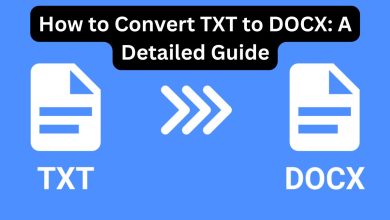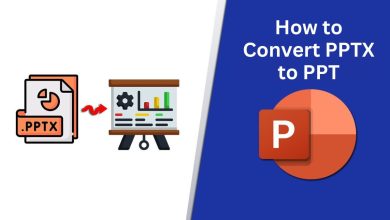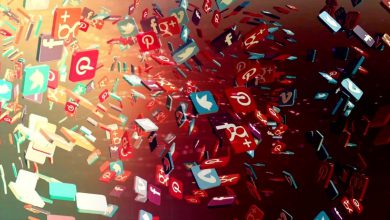
The non-fungible token (NFT) has already gained popularity when it comes to blockchain. NFTs are the latest cryptocurrencies on the block. With the need for authenticity in the blockchain on the rise, it’s no surprise that NFTs are up to the challenge. Who wouldn’t want to authenticate their digital works or assets?
So, what are NFTs? And why are mainstream blockchain enthusiasts looking to this latest cryptocurrency?
At First Glance
As mentioned, authenticity is a desired trait of any type of blockchain and crypto. In other words, no one wants to feel like they’re getting something fraudulent once they’ve invested in it. This is especially true for, say, artists who post their works online; they want viewers to know that their artwork is authentic and cannot be replicated. With NFTs, digital artwork and other collectibles are made “one-of-a-kind” and verifiable. This allows for easier trade on the blockchain, and for artists, influencers, etc. to protect their digital art and images.
So, why all the hype on NFTs?
This essential overview will cover what NFTs are, and why you might want to jump onto this digital bandwagon. Whether you’re looking to buy or sell NFTs, or want to invest in them to protect digital assets, this overview will help you to understand this ever-growing phenomenon.
Now that you’ve gotten the gist of things, it’s time to talk about the “non-fungible” in non-fungible tokens.
What Is “Non-Fungible”?
“Before acknowledging the term ‘non-fungible,’ it’s important to know what ‘fungibility’ means,” says Jenna Riggs, a blockchain writer at academized.com. “Fungibility implies that identical goods or assets can be swapped interchangeably. Take, for example, a dollar bill. Each dollar bill is worth one dollar in countries like the United States. However, this isn’t the case for things like tickets, which are considered ‘non-fungible.’ Tickets – concert ones, airplane ones, and so on – are non-fungible, because they’re not the same. Even when they’re priced the same, you can’t exchange tickets, because they symbolize a specific seat, date, location, and so on.”
Therefore, non-fungible tokens (NFTs) can’t be exchanged, because they have their specifics that make exchangeability impossible. Any attempts to make NFTs exchangeable are seen as fraudulent.
So, What Are NFTs?
Non-fungible tokens are pieces of digital content linked to the blockchain. The blockchain serves as the digital database for all cryptocurrencies, including Bitcoin and Ethereum.
Unlike Bitcoin and Ethereum (which are fungible like the regular U.S. dollar), NFTs are… well, non-fungible, because they can never be replaced or exchanged with another one. In other words, no two NFTs are alike, because they are created with specific information. Thus, NFTs are often used to authenticate ownership of digital assets such as artworks, recordings, and so on. If something is limited edition, for example, the owner or creator of the limited-edition something can authenticate it with an NFT. In that case, NFT serves as a certificate of authenticity to prove its legitimacy.
As such, NFTs can be used to buy and sell digital artwork. NFTs can take the form of any of the following:
- GIFs
- Images of physical objects
- Tweets
- Virtual trading cards, etc.
Later in this post, we will show you some recent examples of NFTs taking on these forms.
Why Are They Important?
So, now that there’s a definition and explanation behind NFTs, why are they so important in the blockchain world?
First, certificates of authenticity are nothing new. Many online creators, artists, musicians, etc. often look for ways to authenticate their works. That’s where NFTs come in. For creators and artists looking to authenticate their digital works and or artifacts, they can turn to blockchain to create NFTs.
Here are some examples of how NFTs are being used by companies, and even public figures, in the effort to protect digital works:
- Grimes is known for its elaborate video art. By selling $6 million worth of digital art as NFTs, according to The Verge, the artist has contributed to the blockchain craze.
- Still remember the “nyan cat” meme? Believe it or not, the GIF created by artist Chris Torres had placed it for auction as an NFT.
- Mike Winklemann (also known as the artist “Beeple”) had created a unique collage artwork called “Everydays: The First 5000 Days.” Now, the artwork has been sold as an NFT for a whooping $69 million on the platform Christie’s. As a result, Beeple’s NFT made him one of the top three most valuable living artists, as of February 2021.
- Even a simple Tweet can turn into an NFT. That was the case for Dallas Mavericks owner and entrepreneur Mark Cuban. He had one of his Tweets from Twitter created into an NFT, and issued as rewards for those who attend Mavericks basketball games. Speaking of the National Basketball Association (NBA)…
- The NBA has its own NFTs, in the form of virtual trading cards. The organization has a website where people can buy NBA-inspired NFTs as trading cards.
- Decentraland hails itself as a safe place to buy NFTs. In essence, it serves as virtual real estate, for those looking to invest in NFTs.
So, what can be learned from NFTs so far?
As more people and companies choose to capitalize on NFTs, there are no signs of the crypto stopping. Buying, selling, and creating NFTs are all made possible with state-of-the-art smart contract technology. This allows for original NFT artists to collect a percentage of all subsequent sales from uploading content and selling NFTs.
Let’s dive deeper.
Buying NFTs
At this point, it’s no surprise that people can buy NFTs. If you have some Ethereum on hand, then you can buy NFTs at participating marketplaces. Sometimes, you might find a marketplace that can accept whatever currency that you have on hand. In addition, if you’re wondering what can be passed off as an NFT, any digital image will do.
Now, here are some things to think about when buying NFTs, especially if you’re new to this:
- Look for a reputable NFT marketplace to buy from. Most common marketplaces include:
- Mintable
- Nifty Gateway
- OpenSea, AND
- Rariable
- Research what type of digital wallet you’ll need to store your purchased NFTs.
- Be mindful of what type(s) of cryptocurrency that the marketplaces will accept, in order to buy NFTs.
- Be mindful of the fees and other charges that some marketplaces might have – these are often called “gas” fees. These fees refer to the energy needed to complete transactions on the blockchain. Other fees include having to convert something like U.S. dollars into Ethereum, along with closing expenses.
Selling NFTs
On the other hand, if you’re interested in selling NFTs, you may do so on marketplaces. Just keep in mind: The process of selling NFTs varies across many platforms.
How does it work?
Well, a seller can upload their content to an NFT marketplace. Next, the seller must follow the instructions on how to turn said content into an NFT. When converting the content into NFTs, they must set the suggested pricing and offer specifics like a description of what the content is.
Then, the NFT can be placed on sale, where people can buy it using Ethereum or, in some marketplaces, other ERC-20 tokens (e.g., WAX and Flow).
Creating NFTs
“Non-fungible tokens can be created by anyone,” says Lisa Adams, a tech writer at academized.com. “Like any form of technology, anyone can sprout out NFTs, as long as they have digital wallets, some Ethereum, and some way to connect to an NFT marketplace. When an NFT is created, the creator can upload it onto an NFT marketplace. Afterward, the creator can turn the NFT into what’s called ‘crypto art.’ Normally, crypto art can be created by anyone, from artists to blockchain experts to complex designers.”
Since the rise in NFTs, more and more creators have burst onto the scene to make their own and sell, thus making blockchain a lucrative business for some.
Risks
With everything said, handling NFTs – whether you’re buying, selling, and or creating them – comes with risks. Like anything that comes from the blockchain world, NFTs also have their faults.
One major risk lies in its security of it. Believe it or not, cryptocurrencies have been stolen by cyber thieves before. Even hackings have made cybersecurity more vulnerable, with crypto in the crosshairs. However, this all depends on what’s in the NFT, and how hard a potential victim is willing to go to get their stuff back.
Despite the risks, technology has worked around the clock to ensure that cybersecurity is tighter and harder to compromise by would-be cybercriminals. That means that NFTs are continuing to advance, as technology advances, which is part of why people have such a fancy towards things like blockchain.
Conclusion
Ultimately, NFTs will continue to take the blockchain world by storm with their advancements. Plus, they’ll continue to make authenticity… well, more authentic, as people buy, sell, and or create them.
Despite the endless requirements and the possible risks, NFTs have already made blockchain more mainstream, especially for artists, companies, and public figures. All that can be said now is this: Welcome to the world of blockchain and cryptocurrencies!
Christina Lee is a writer and editor at the Write my essay service. As a project manager, she oversees various projects in many companies nationwide. As a content writer, she writes articles about blockchain, tech trends, and digital marketing.
Learn more from business and read Five predictions for the creator economy in 2022.



